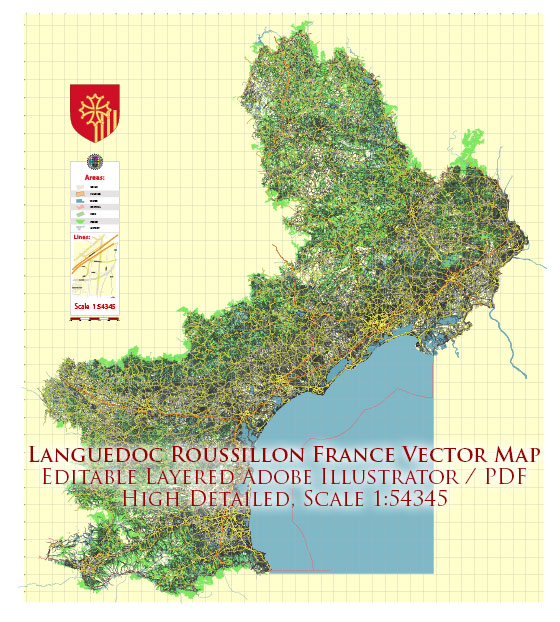Languedoc-Roussillon is a former administrative region in the south of France that has since been merged into the larger Occitanie region. It is known for its diverse water resources and numerous bridges.
- Rivers: Languedoc-Roussillon is blessed with several major rivers. The most prominent ones include:
- Garonne River: This river flows along the western border of the region.
- Aude River: It runs through the department of Aude and is known for its beautiful gorges.
- Hérault River: The Hérault River flows through the department of Hérault and is popular for its picturesque canyons and natural beauty.
- Têt River: This river flows through the department of Pyrénées-Orientales.
- Canals: The region is also crisscrossed with canals, which are important for transportation and irrigation. The most notable one is the Canal du Midi, a UNESCO World Heritage Site, which connects the Garonne River to the Mediterranean Sea and passes through the city of Toulouse in the western part of the region.
- Bridges: There are numerous bridges in Languedoc-Roussillon, many of which are of historical and architectural significance. Some of the notable bridges in the region include:
- Pont du Gard: This ancient Roman aqueduct bridge, a UNESCO World Heritage Site, is one of the most famous bridges in the region. It spans the Gardon River and is an iconic example of Roman engineering.
- Pont Saint-Pierre: This bridge crosses the Aude River in the city of Carcassonne and is known for its medieval architecture.
- Pont Ambroix: This ancient Roman bridge spans the Vidourle River and is located near the town of Ambrussum. It is another testament to the region’s rich history.
Languedoc-Roussillon’s water resources and bridges play a significant role in the region’s cultural heritage and provide opportunities for various recreational activities, such as boating, fishing, and sightseeing. The region’s natural beauty and historical sites, including its water-related features, attract tourists from around the world.


 Author: Kirill Shrayber, Ph.D.
Author: Kirill Shrayber, Ph.D.